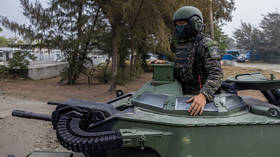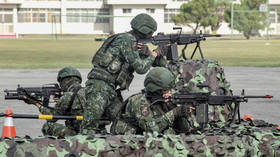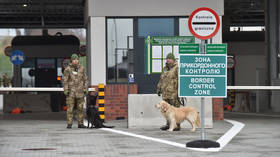Taiwan drills for missile attacks on ‘invading forces’ – media

Taiwanese military forces have reportedly carried out live-fire drills along the self-governing island’s southern coastline, preparing their response to a possible invasion amid rising fears of a Chinese attack.
The latest exercise featured Taiwanese troops firing missiles from armored vehicles to destroy targets along the shoreline near the far southern tip of the island, Reuters reported on Monday. The troops used camouflaged Humvees and fired US-made TOW anti-tank missiles at stationary targets near the coast.
“Most of the drills we carried out today involved live artillery because the defense exercise needs to be similar to actual combat, allowing our army to be confident and have the capability to protect our homeland,” Taiwanese Defense Ministry spokesman Sun Li-fang told reporters.
The Chinese government claims sovereignty over Taiwan and considers it a breakaway province. Chinese officials have vowed to reunify with Taiwan, by force if necessary, and ramped up military drills in the region after then-US House Speaker Nancy Pelosi made a controversial visit to Taipei last August.
Taiwan’s military is set to hold its annual Han Kuang war games later this month to test its readiness to face a Chinese invasion. The exercises will reportedly include combating a blockade and utilizing civilian airports in the event of military airfields being destroyed in a war.
A former Taiwanese defense minister, Feng Shih-kuan, warned in May that the island might have to pay an “unthinkable price” if it accepts free weapons from the US. Current defense chief Chiu Kuo-cheng said Taiwan was negotiating with the Pentagon on receiving $500 million worth of military aid, including missiles and logistics services.
Beijing has accused Washington of emboldening Taiwanese separatists and has repeatedly scolded the US for heightening tensions by selling weapons to Taipei. Chinese leaders have warned Taiwan that any attempts to seek independence by relying on US help would be a “dead end.”














